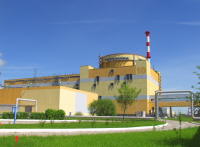Clean bill of health for Ukraine's nuclear plants
24 February 2010
A year-long assessment exercise carried out by the International Atomic Energy Agency (IAEA) and the European Commission (EC) has found that safety at Ukraine's nuclear power plants is in line with international standards.
 |
Ukraine's Rovno 4 (Image: Energoatom)
|
Ukraine's Energoatom announced the completion of the project to verify the safety of the country's nuclear plants, which was launched as part of a memorandum of understanding (MoU) on energy cooperation between the European Union (EU) and Ukraine. Over the course of the project, safety assessments were carried out at all 15 reactors by safety experts from Ukraine, the IAEA and the EC.
The assessment looked at safety in four areas: power plant design; power plant operation; radioactive waste; and regulatory issues. The international experts found that safety in all areas was generally in line with international standards.
No inconsistencies were found in plant design safety and each unit achieved full compliance with at least 172 out of 192 IAEA requirements. Programs already in place to address those areas where full compliance was not achieved have been judged by the international experts to be sufficient to bring the units into full compliance with international safety requirements, Energoatom says. From the operational point of view, the safety assessment found that Ukraine's existing reactors were "almost fully consistent" with international requirements and standards, to a similar degree as in many other countries.
The are currently 15 power reactors in operation at four plant sites in Ukraine: two at Khmelnitski, four at Rovno, three at South Ukraine and six units at Zaporozhe. All are Russian VVER pressurized water reactors (PWRs), two being 440 MWe V-312 models and the rest being the larger 1000 MWe units - two early models and the rest V-320s. Power reactors have operated in Ukraine since 1977, and over 300 reactor years of operating experience have since been accumulated.
Researched and written
by World Nuclear News